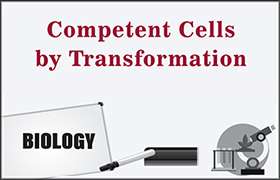CBSE Class 12-science Answered
You are instructed to isolate a gene X from the given tissue of a tomato plant. Explain the procedure followed in correct sequence so as to get gene ready for amplification.
Asked by Pragnya Kar | 19 Mar, 2016, 12:42: PM
Isolation of Genetic Material (DNA)
- The DNA must be pure and free from other macromolecules such as RNA, proteins, polysaccharides and lipids for the action of restriction enzymes.
- Pure DNA is obtained by treating the bacterial cell or plant and animal tissue with enzymes.
- The enzyme lysozyme is used for digesting the bacterial cell wall, cellulose for the plant cell wall and chitinase for the fungal cell wall.
- RNA can be removed by treating the cells with ribonuclease, while the proteins can be removed by treatment with protease.
- The purified DNA finally precipitates out after the addition of chilled ethanol.
- DNA appears in the form of fine threads in the suspension.
Cutting of DNA at Specific Locations
- Purified DNA is cut by restriction enzyme under optimal conditions.
- The restriction enzyme digest is run in agarose gel electrophoresis.
- DNA is a negatively charged molecule, and so, it moves towards the positively charged electrode, the anode.
- The same procedure is then repeated with the vector DNA.
- After cutting the source DNA and the vector DNA with a specific restriction enzyme, the gene of interest from the source DNA and the cut vector are mixed, and the enzyme ligase is added to it.
- The ligase forms new sugar-phosphate bonds to join two DNAs.
- This results in the formation of rDNA or hybrid DNA or chimeric DNA.
Amplification of Gene of Interest using PCR
- Polymerase chain reaction (PCR) is a technique used to synthesise multiple copies of the desired gene in vitro within a short span of time.
- Amplification of a gene sample of interest is carried out using PCR in the following three steps:denaturation, annealing and extension.
Answered by Sivanand Patnaik | 20 Mar, 2016, 11:10: AM
Concept Videos
CBSE 12-science - Biology
Asked by roshuchaudhari25 | 28 Apr, 2024, 09:22: PM
CBSE 12-science - Biology
Asked by chowdhuryraina11 | 11 Jun, 2022, 12:03: PM
CBSE 12-science - Biology
Asked by kaif06ali02khan04 | 05 Dec, 2021, 05:01: PM
CBSE 12-science - Biology
Asked by kratikad5 | 12 Sep, 2021, 11:31: AM
CBSE 12-science - Biology
Asked by mohammedjafer975 | 09 Dec, 2020, 12:24: PM
CBSE 12-science - Biology
Asked by Abdulgafooralfahath | 22 Oct, 2019, 12:06: PM
CBSE 12-science - Biology
Asked by kripanjalihimansu | 28 Feb, 2019, 06:02: AM
CBSE 12-science - Biology
Asked by raviyadav19712001 | 10 Jan, 2019, 08:55: PM
CBSE 12-science - Biology
Asked by tweetydash01 | 10 Aug, 2018, 05:23: PM
CBSE 12-science - Biology
Asked by Topperlearning User | 10 Jun, 2014, 05:28: PM






